 |
                                           |
 |
 |
You are currently viewing the F.155T Submissions
Page |
  |
 |
Click this icon
to return to the Sky Monographs page |
  |
  |
Introduction |
| In
1955, the F.155T requirement was issued for a new
interceptor for the RAF. This machine was to
be capable of all-weather interception of targets
flying at 60,000 feet and Mach 1.3 using guided
weapons. From start up the fighter was to
reach 60,000 feet at a range of 70 nautical miles
from base in 6 minutes at a speed of at least Mach
2. Several companies submitted designs to meet
the requirement; Armstrong Whitworth, De Havilland,
English Electric, Fairey, Hawker, Saunders-Roe and
Vickers. Almost all the designs used rockets
for boost at high altitudes and carried 2 or 4
missiles. For further information on these and other post-war British fighter designs, please consult the excelent "British Secret Projects: Jet Fighters Since 1950", by Tony Buttler. A detailed history of the development of British Guided Weapons can be found in "British Secret Projects: Hypersonics, Ramjets and Missiles", by Chris Gibson and Tony Buttler. |
                               |
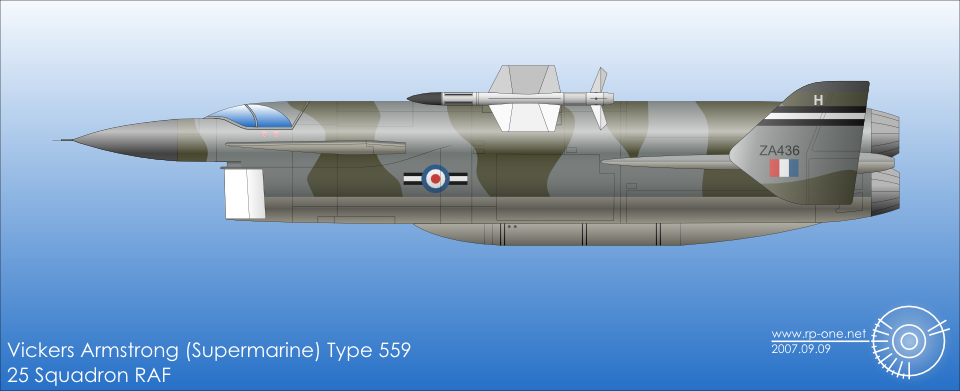 |
                               |
 |
The
Vickers Armstrong (Supermarine) Type 559, featuring
a canard layout with endplate tailfins, two stacked
turbojets with rocket boosters in the wing trailing
edge and carrying two Red Hebe radar guided AAMs on
the top of the fuselage. The aircraft is shown
in 25 Squadron colours. In service, the
winning F155T design would have been used by Javelin
squadrons. |
 |
                               |
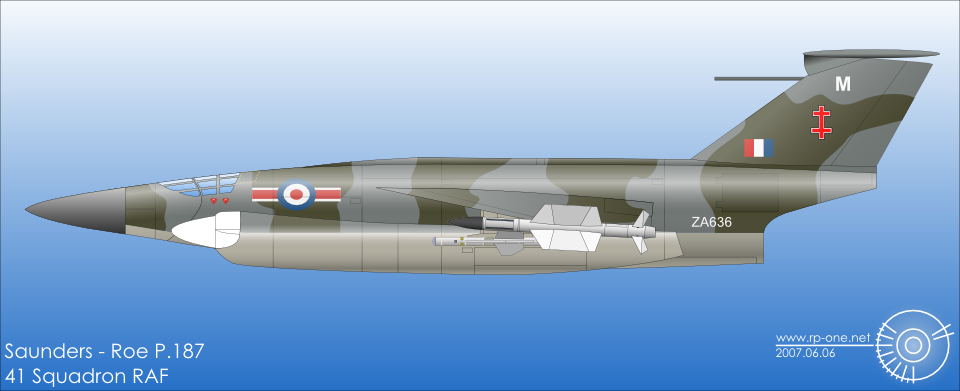 |
                               |
 |
The
Saunders Roe P.187, developed from the SR.53 and
SR.177, featuring a conventional clipped delta wing
and T-tail. Two turbojets were placed
side-by-side in the rear fuselage, with four rocket
boosters above them. Two Red Hebe radar guided
AAMs and two Red Top IR guided weapons could be
carried. The nose forward of the cockpit slid
down to improve visibility on landing. The
aircraft is shown in 41 Squadron colours. |
 |
                               |
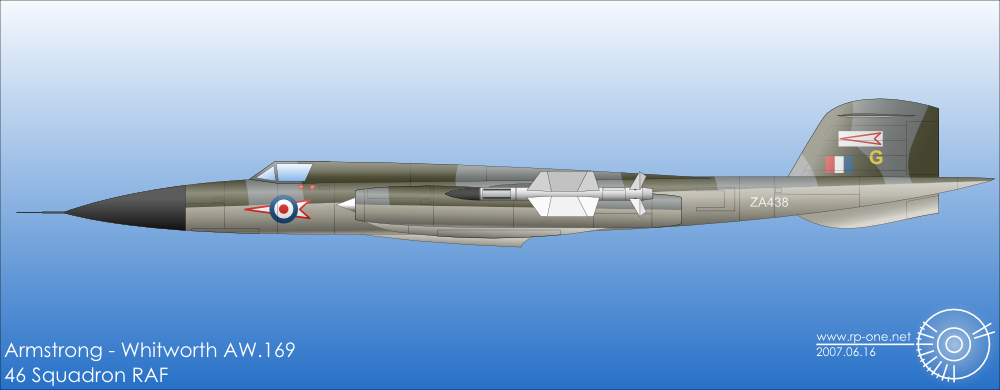 |
                               |
 |
The
Armstrong-Whitworth AW.169, the largest of the
submitted designs. Four turbojets were to be
fitted in two underwing pods, each pair fed by a
single intake. The rocket booster was fitted
in the lower fuselage. Two Red Hebe radar
guided AAMs were carried on the wingtips, and the
WSO was seated in a partially submerged cockpit
alongside the pilots' more conventional
accommodations. The aircraft is shown in 46
Squadron colours. |
 |
                               |
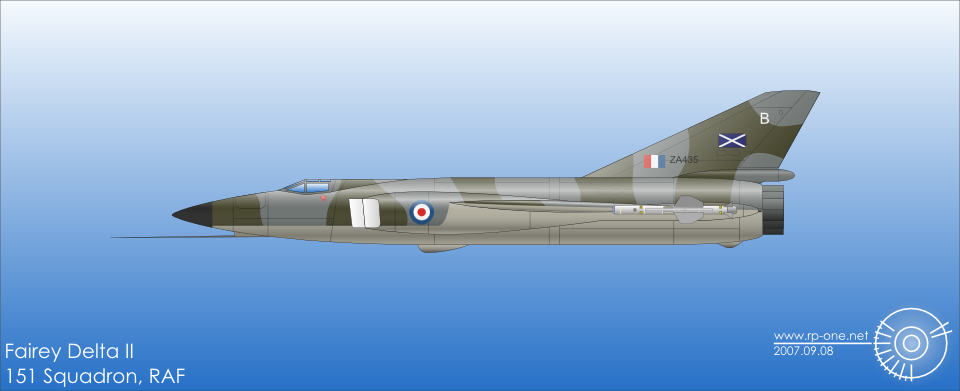 |
                               |
 |
The
initial proposal from Fairey was based on their
Delta II research machine, and was only capable of
using the smaller Red Top IR guided weapon. A
rocket booster was fitted on either side of the
fuselage aft and the entire cockpit and nose drooped
for landing. |
 |
                               |
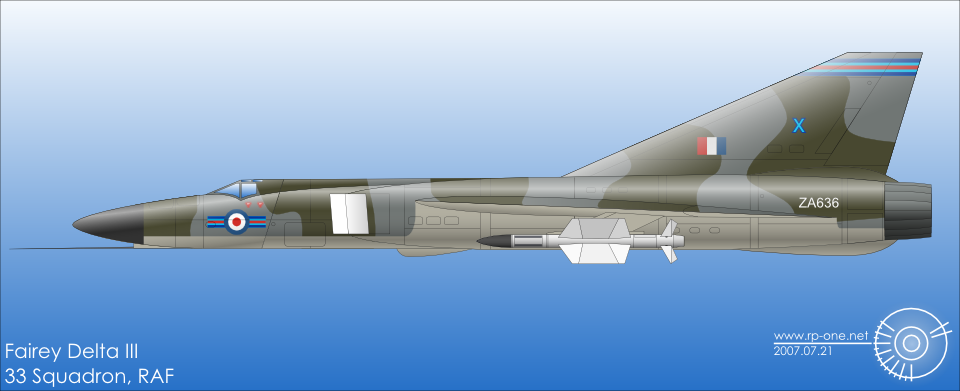 |
                               |
 |
The
Fairey Delta III, the joint winning design, (along
with the AW.169). A much enlarged development
of the Delta II research aircraft. Two rocket
boosters were fitted between the turbojets in the
aft fuselage. The normal weapons load was two
Red Dean AAMs under the wings, but four Red Top
weapons could be carried as an alternative.
The pilot and WSO were seated side-by side and the
forward fuselage, including the cockpit, could be
"drooped" to improve visibility on landing. |
 |
 |
Additional
profiles of the Fairey Delta III in service can be
seen here. |
 |
                               |
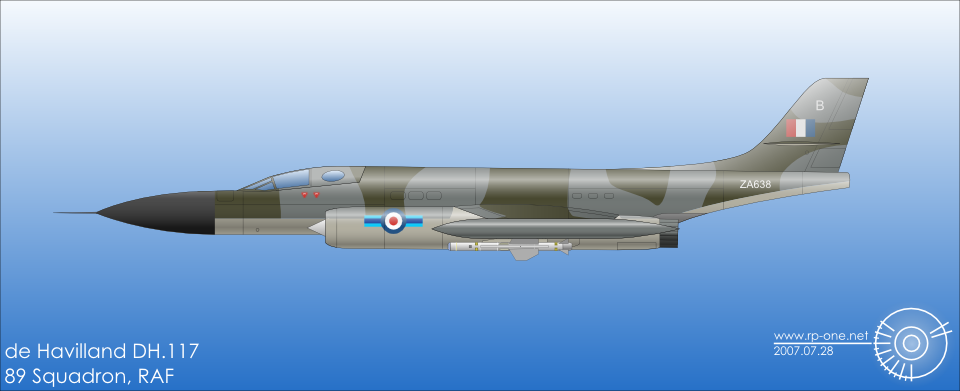 |
                               |
 |
The
de Havilland DH.117. A relatively small
design, powered by two turbojets under the fuselage
and a rocket booster in the extreme tail. The
armament of two Red Top AAMs was carried under the
trapezoidal wings and the pilot and WSO were seated
in tandem. This design came a "bad fourth" in
the competition. |
 |
                               |
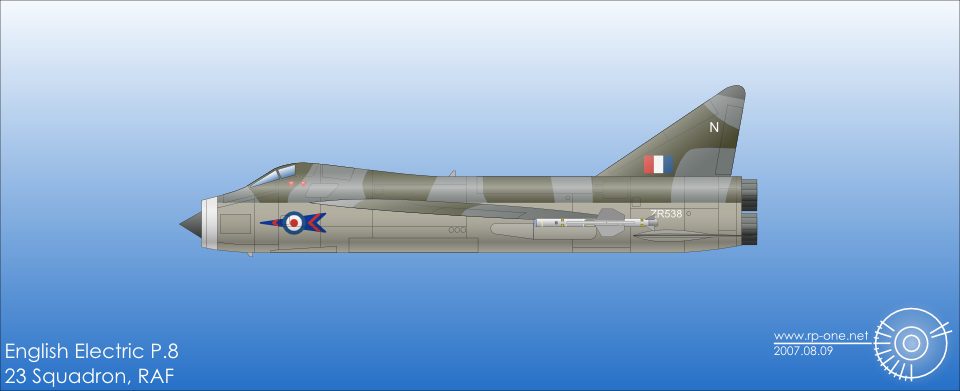 |
                               |
 |
The
English Electic P.8. A development of the P.1B
(Lightning), this design featured a new wing
(with the familiar arrow-head planform) and an area
ruled fuselage. There were no booster rockets,
and the armament of two Red Top missiles was carried
on the wingtips. |
 |
                               |
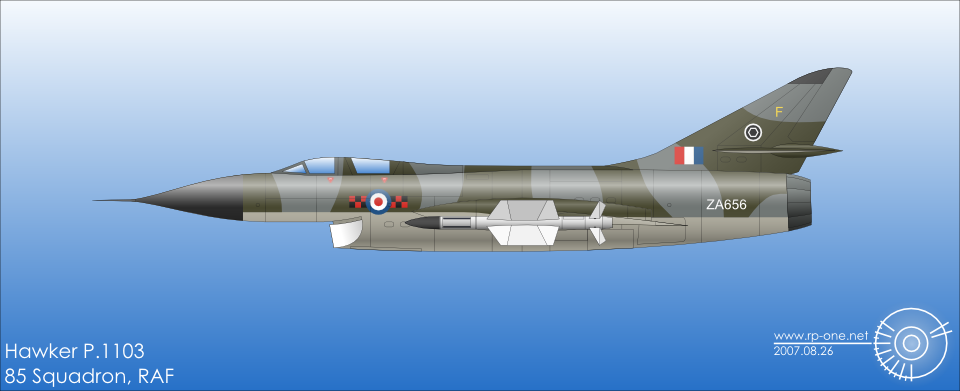 |
                               |
 |
The
handsome Hawker P.1103 was a single engined machine,
with the booster rockets in removable pods on the
wings. The weapons - Red Hebe is shown here -
were carried on the wing tips. This design was
to lead to the P.1116 and P.1121 strike fighters. |
 |
                               |
 |
                               |
 |
Very
much an addendum to F155T, is the Avro 729.
Based on the small mixed power Avro 720 (the
prototype of which was partially constructed), the
729 featured an enlarged cockpit, but little else is
known as the design was never officially tendered. |
 |
                               |
 |
                               |
 |
The
Avro Canada Arrow was also considered for RAF
service, allthough not strictly for the F155T
requirement. Instead the CF-105 would have
been ordered instead of the Thin-Wing Javelin, to
requirement F153. However, had this occurred
then the F155T requirement might not have been
raised, so it is a worthwhile inclusion here. |
 |
©
Rachel Pawling, 2015
Correspondence to rachel@rp-one.net
f155t - v.5
Correspondence to rachel@rp-one.net
f155t - v.5